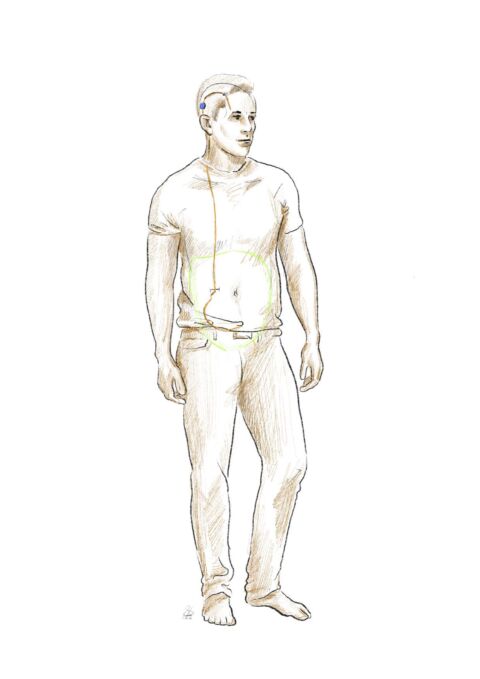Hydrocephalus: A variety of diseases with the same name
Almost everyone knows the term ‘hydrocephalus’ and associates it with a disease affecting children, particularly in developing countries. Fortunately, today we only know these extreme forms of the disease from television. In fact, the word covers several different diseases that actually have nothing to do with each other. However, they can be roughly divided into acute and chronic forms.
Acute hydrocephalus, for example due to a tumor or cerebral hemorrhage, is life-threatening and usually needs to be treated quickly. The treatment of the underlying disease, for example the removal of a tumor, also plays a role.
Chronic forms, on the other hand, usually occur in adulthood and are not life-threatening. Some exist from early childhood, remain undetected for a long time and only lead to symptoms in adulthood.
Normal pressure hydrocephalus, for example, only occurs in advanced adulthood and we still only have a very vague idea of how it develops in the first place. Fortunately, the treatment of all these diseases has progressed considerably and is now a standard procedure in neurosurgery.
Liquor shunt
In most cases, a so-called cerebrospinal fluid shunt is used, which is implanted by specialists under general anesthesia. This is a fine plastic tube that runs invisibly under the skin. Excess cerebrospinal fluid (CSF) can be drained from the brain via the shunt – usually into the abdominal cavity, where it is absorbed back into the blood. The shunt has a valve (near the ear) that can be used to regulate the amount of cerebrospinal fluid that flows out.

It is important that doctors check the function of the shunt regularly, as such systems are susceptible to wear and defects. It is often necessary to adjust the pressure level in the early phase after implantation. Sometimes the shunt has to be replaced after some time, which makes a new operation necessary. This also applies, for example, if the shunt was implanted at a young age and the child has grown. Then the plastic tube no longer has the correct length and no longer reaches the abdominal cavity.
There are also forms of hydrocephalus that are not treated with a CSF shunt, but endoscopically. The cause of these diseases is that the cerebrospinal fluid cannot pulsate properly between the different cerebral ventricles due to an anatomical obstacle (a tissue membrane, a tumor, a hemorrhage). Creating an opening between the inner and outer ventricles of the brain usually solves this problem without an implant. An endoscope, a very small camera, is used to look into the ventricles of the brain and an opening is created at the base of the skull using fine instruments. This procedure only takes a few minutes and is also performed under general anesthesia. The operation is called an “endoscopic third ventriculo-cisternostomy” (or ETV).
Why the USZ
It is a science in itself to recognize hydrocephalus and differentiate it from other neurodegenerative diseases such as Parkinson’s or Alzheimer’s disease. In addition, the treatment of hydrocephalus is a life-long task and is not completed with the mere implantation of a CSF shunt. The correct function of the shunt must be monitored and changes in symptoms and complaints must be taken into account. Fortunately, most CSF shunts work perfectly for life and patients benefit greatly from them. Sometimes, however, the treatment is more complicated and requires expert knowledge and a lot of experience. At the USZ, we treat our patients on an interdisciplinary basis and involve the various specialties of neurology, neurosurgery and neuroradiology, as well as the expertise of the memory clinic, the cerebrospinal fluid laboratory, physiotherapy and occupational therapy, and neurointensive care.
In addition to surgical expertise, we offer a special consultation for complex hydrocephalus diseases and an interdisciplinary board for therapy decisions. It is particularly important to us that our patients are closely monitored not only at the beginning of the disease, but throughout their lives, so that the diseases, which are usually chronic in adults, can be treated in the best possible way.
Further information on this topic:

